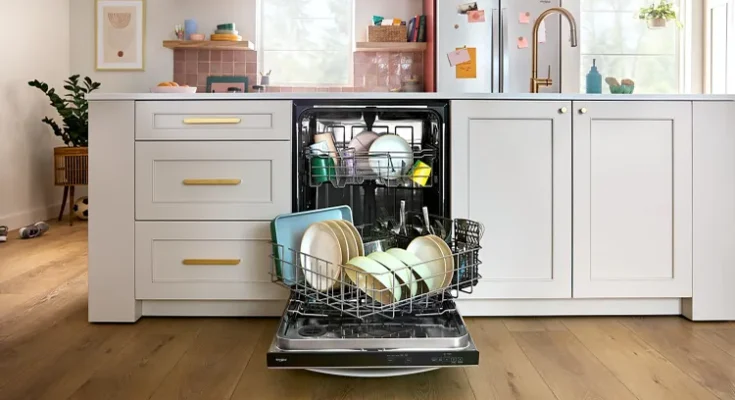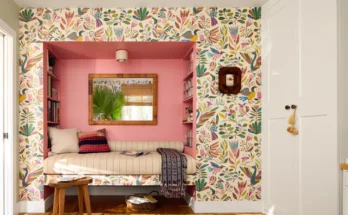Plus ways you can make your home more accessible (and why it’s so important).
Household chores, such as putting away groceries or unloading the dishwasher, might not seem appealing, but for Ali Stroker, award-winning actress and singer, who’s used a wheelchair for 35 years, completing them isn’t only exciting but empowering.
“It’s empowering to have accessibility in your home because it makes you feel like you can really manage your life,” says Stroker. “And I know there are so many people out there with limited mobility and different abilities that struggle with everyday activities, and it really does affect how you feel. And I love to feel like I’ve got this. I can manage my life.”
But it’s not always as straightforward as simply bending over and unloading clean dishes. For someone with a physical disability, chores can be much more challenging if appliances aren’t accessible. To make kitchens more inclusive, Whirlpool just debuted a new product, the Spin&Load Rack, to help people with physical disabilities take care of their homes.
Whirlpool’s Spin&Load Rack
Whirlpool’s Spin&Load Rack raises the bar for accessible appliances by spinning 360 degrees, which allows users with physical disabilities access to all parts of the bottom rack. Instead of having to maneuver around the dishwasher while loading and unloading dishes, users can simply turn the rack to reach the item they need. The rack was developed in partnership with the United Spinal Association, and Stroker says it was even tested by people with physical disabilities for ease and comfort during use.
The rack, which costs $150, is designed to fit into all dishwashers manufactured by Whirlpool Corporation after 2018, including Amana, JennAir, KitchenAid, and Maytag brand dishwashers. After you receive the rack, all you have to do is remove your dishwasher’s current rack and install the new one.
Why Having Accessible Appliances Matters
Stroker says having accessible appliances affects everyone in her home, whether they have physical disabilities or not. It’s especially important for her to have access to all parts of her home to be able to take care of her family and feel empowered.
“I am a mommy, a wife, an actress, a singer, an advocate. I have a really busy life, and I use a wheelchair for mobility,” Stroker says. “And it is a priority for me to have accessibility and inclusivity in my home, not just for me, but so my son can grow up in an environment where he sees that I can have access to everything.”
While certain appliances have been updated to be more accessible, there are plenty of household items that aren’t as easy for Stroker to use. “I’m so surprised that it’s taken until 2025 for technology and innovations to come [this far], so that everyone is able to do these daily tasks,” she says. “Appliances are meant to make your life easier, but if you can’t use them, then they don’t work.”
More Ways to Make Your Home Accessible
After being in a wheelchair for 35 years, Stroker has gathered tips and tricks to make your home work for everyone. While certain fixes take more time and money (like making height-specific countertops and shelves), others are quicker to complete. Stroker says one of the easiest and most effective ways she made her kitchen more accessible was by finding an adjustable chopping block for prepping meals.
Another important feature of accessible homes is ramps or lifts at all entrances and exits. “It’s really important for me to have access in and out of the house, and that means that I can get in and out 100% on my own, independently,” Stroker says. “That is super, super important for not just my safety, but for my head, to know I can get out if I need to.”
Next up on Stroker’s list of items to update is lowering shelves in closets, making all bathrooms accessible, and widening doorframes. Stroker says making changes in homes to match people’s needs isn’t a hassle—it’s something everyone deserves.
“So often, for people with disabilities, we feel like it would be a burden—it would be too expensive, it would be too much to try to create inclusivity and accessibility,” she says. “And I just want to remind people that there are options out there.”



